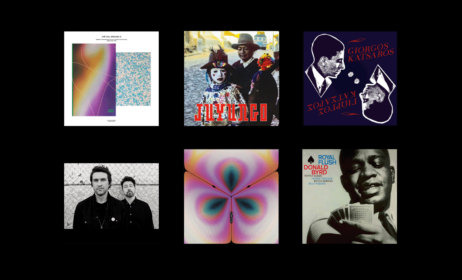Published on
October 31, 2022
Category
Features
Between 1964 and 1992, a monthly music magazine called Krugozor (Кругозор; ‘Outlook’) had young people in the Soviet Union queueing around the corner for every new issue. The magazine covered music, art, history and literature, but was cherished and is perhaps best remembered for the selection of flexi-disc inserts – wafer thin, and an iconic light blue – between its pages. Kateryna Pavlyuk recalls the history of the magazine and explores the impact those blue records had on Soviet youth.
“Me and a friend chipped in together to buy a new issue between us which had a Queen track. We literally wore that record thin”.
This is one of many fond memories found on forums across the internet, where those raised in the Soviet Union remember the wildly popular magazine Krugozor (Кругозор; ‘Outlook’), and how the contents of its back pages broadened young people’s musical horizons.
In print from 1964 to 1992, the monthly magazine had people queueing at kiosks for every new issue. Krugozor covered music, history and literature, but is best remembered for its selection of flexi-disc inserts—wafer-thin, and an iconic light blue. Its articles told of men on the moon and exemplary Soviet citizens on the ground, but the magazine’s audience would be better described as listeners than readers. As one commenter on a nostalgic forum writes: “I honestly don’t remember if I read a single page of the magazine”.
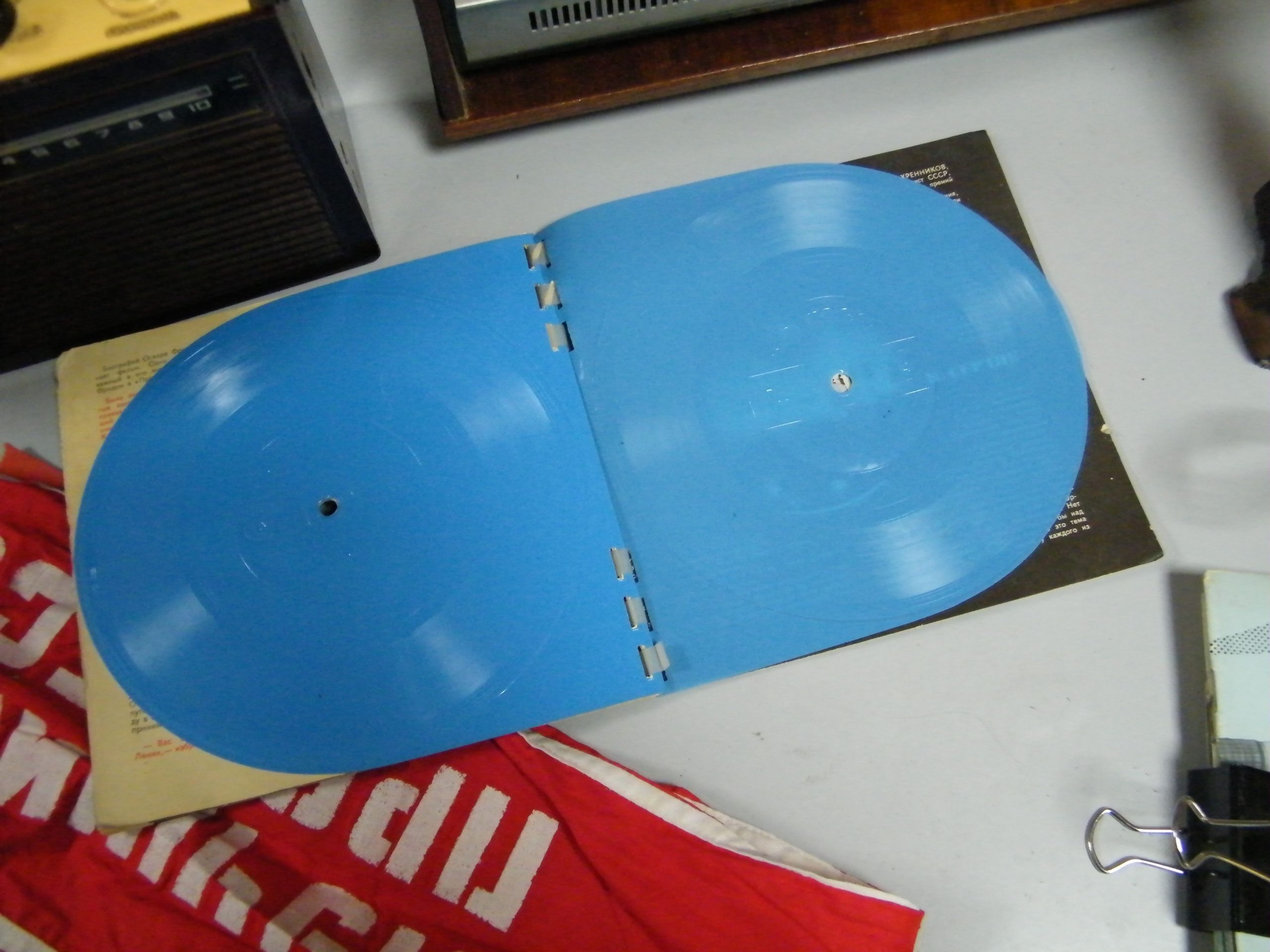
The blue discs rose to prominence for the occasional Western songs they featured—always the last track—through which listeners discovered artists like A-ha, Opus and Joy. This novelty can only be appreciated with an understanding of the sweeping cultural deficit that defined life in the USSR. ‘Western’ clothing like jeans cost almost an entire month’s salary and were sold in dark plastic bags and hushed tones. Kids would collect and iron wrappers from smuggled foreign chewing gum; USSR-produced gum was notoriously unchewable.
With music, Western vinyl could be sourced only through well-placed friends of friends, or sailors, who often sold their wares on return from travels. Foreign radio stations were blocked, encouraging people to get creative. “Those you’d call hackers today”, remembers Evgenia, born in Soviet Estonia, “would back then sit surrounded by tech, trying to catch the signals of international radio stations”. TV and radio rarely played ‘foreign’ music. French and Italian artists like Joe Dassin and Toto Cutugno passed muster, but even then, only on special occasions. The single annual opportunity to catch more exotic sounds was at 4am on New Year’s Day, during a TV programme which compiled concert recordings from international artists.
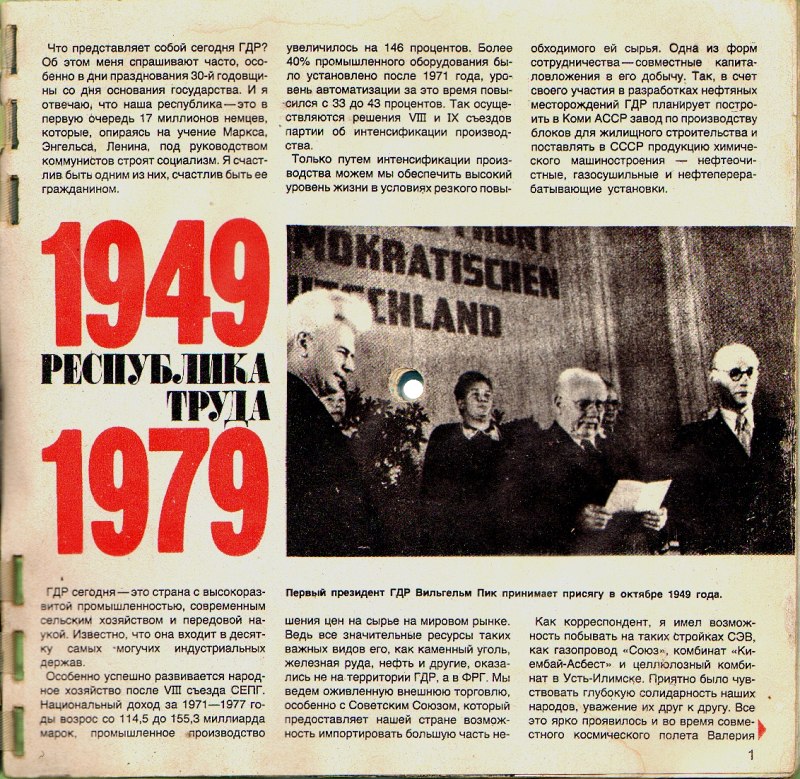
Against this backdrop, Krugozor; printed by the state publishing house, Pravda, and whose flexi-discs were produced by the state-run label, Melodiya–provided a singular, green-lit means of discovering sounds beyond the radio’s familiar carousel of Soviet music. A combination of discussions, interviews and music, each issue’s blue discs offered a consistently eclectic mix, featuring everything from “African Rhythms” and “Shakespeare’s Sonnets” to Joan Baez and Kim Wilde. Launched at the tail end of Khrushchev’s ‘thaw’, which saw censorship loosen its grip, the evolution of the discs over the magazine’s three decades charted the changing Soviet Union.
With the notable and ironic exception of “Two Portuguese Underground Songs” in a 1964 issue, there was little music from beyond the USSR in the magazine’s earliest editions. By the late ‘60s and early ‘70s, some big names from afar made tentative appearances: Duke Ellington, Barbra Streisand. Towards the ‘80s, the ratio of Western tracks cranked up—slightly, still one or two per issue–and the blue discs were occasionally grooved with tracks from The Eagles, Pink Floyd, Elton John and Madonna. In 1988, an issue even included The Beatles, formerly fiercely forbidden.
By the time of the USSR’s collapse in the early ‘90s, the magazine featured major capital-letter bands–INXS, R.E.M and UB40—which now played on cassettes, after the publication switched from their longstanding blue discs to tapes in 1991 By this point, those who were now the first post-Soviet citizens had access to MTV and, as the magazine’s closure in 1992 attests, people no longer needed to queue for a limited dose of music from the other side of the, now fallen, Berlin Wall.
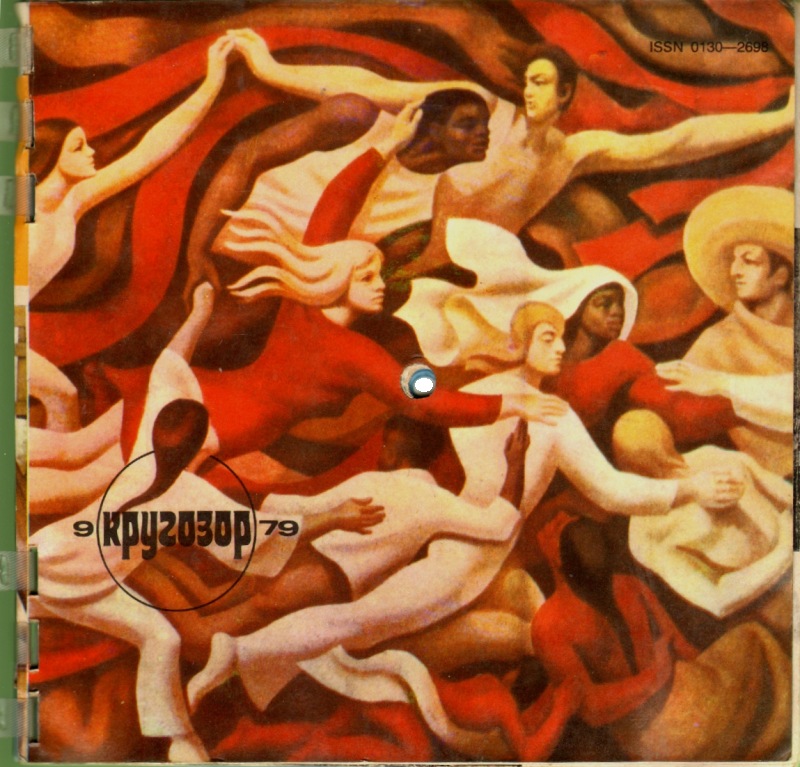
The 33rpm mono discs themselves came as vinyl sheets attached to the magazine’s spine by a plastic ring binding. Until it stretched to a more standard A4 format in 1988, the magazine was square, with a central hole running through every page, allowing the flexi-discs to be folded out and played without being removed from the magazine. But most would cut the records out—it’s not uncommon to see Krugozor discs with some haphazard edges.
Being as thin and light as they were, listeners had to adopt tricks to achieve the best playback, from placing the discs on top of whatever vinyls they had to provide a sturdier base, to holding them down with coins for more consistent rotation. Playback was one part of the puzzle. Another was having something to play them on—a record player was no small luxury, and often a large wooden furniture affair, like a Rigonda radiogram, inherited from grandmothers. But the first battle was at point of purchase.
The Soyuzpechat [‘Soviet press’] kiosks where you could get hold of an issue were ubiquitous but not equal in their offering. The more remote your address, the slimmer your pickings. Rostislav, raised in Soviet Ukraine, mentions his good fortune of growing up near Olesko Castle, a popular tourist attraction, which meant that his local kiosk got all the good titles—including Krugozor. Even so, he had to pull some strings. His kiosk only got two copies of every issue and the director of the local art gallery always bought one. In exchange for some (foreign) gum here and a chocolate bar there, the vendor would always hold the other issue back for Rostislav, calling him as soon as she got it in stock.
For most, their Western music collection comprised a handful of Krugozor discs or nothing. Costing one, and later 1.5 roubles, when a monthly salary was 100 roubles, it wasn’t cheap. But with a ‘proper’ vinyl setting you back 10 roubles, and at risk of serious consequences if you were seen selling or buying a Western one, Krugozor’s blue flexi-discs were more accessible than any alternative.
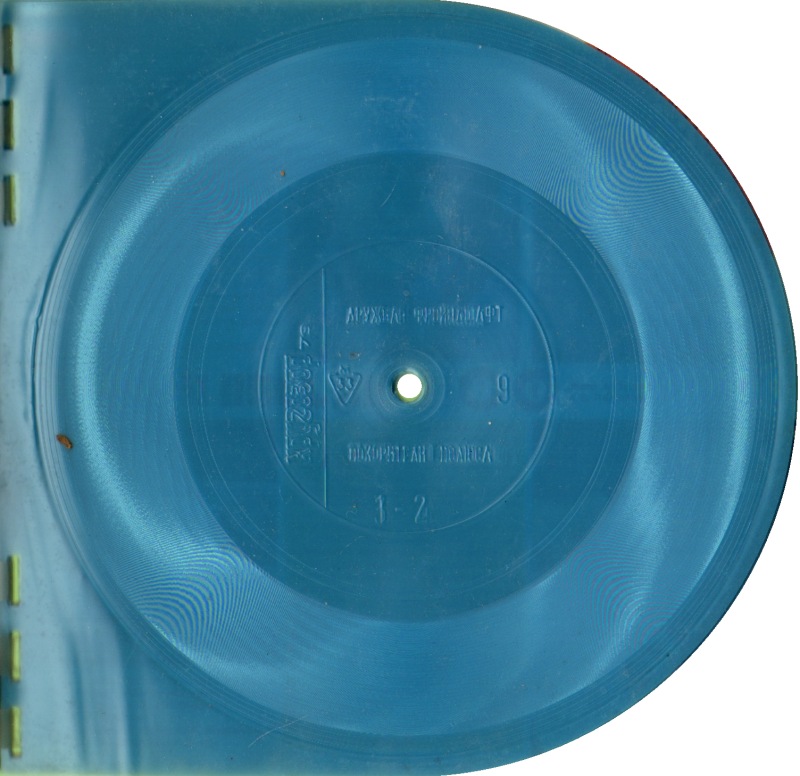
As Evgenia recalls, “black ones were the best of the best, and meant you’re incredibly cool. But those without the means would get these blue ones”. Rostislav and Evgenia refer to vinyl as “black records”—defining them in opposition to the bright-blue records they were more likely to own, however, with Western music vinyl being available only through the black market, the adjective is apt.
Record colour or cost aside, Krugozor’s popularity speaks to a hunger for Western music that the Soviet state both generated through censorship and tantalisingly drip-fed through this singular publication. Transporting Soviet youth to Hotel California and beyond, Krugozor offered a keyhole into sounds beyond the iron curtain and served as far more than the sum of its pages.
Words by Kateryna Pavlyuk




